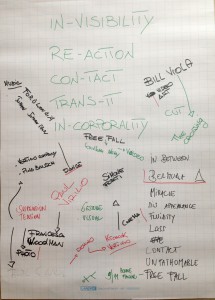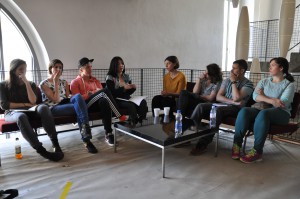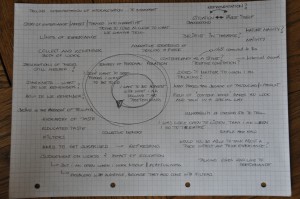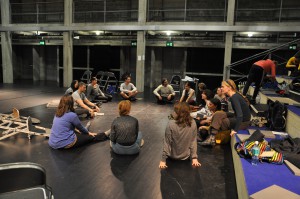Some thoughts on yesterday’s everything and today’s nothing but rain.
Who needs a story? If I were questioning myself, I’d say “I do”. Who needs a narration? I do. Who needs a tale, a myth, a reference to another story, a hidden story, an invisible story, a love story, a dying story, a hoping story, a hopping story, a frightening story, a bleeding story, a laughing story, a smiling story, a crying story, a playing story, a story craving to reveal under the floor, a story crawling on the walls, hanging from the ceiling, walking through the public. A story behind the door, under the seats, sewed on the costumes, sweating inside the lights, flowing in the veins, shivering beneath the skin, behind the body, under the body or inside it.
No recipe. Our bodies are stories, they do not have to tell one. Samuel Beckett writes in his Texts for Nothing: “There has to be a story, apparently, since there is a language, what does a story need, one doesn’t have to have a story, just a life, that was my mistake, one of my mistakes, to have wanted a story for myself, as if life was not enough” (1954).
But the “thing” we call “Art” and all its genres is something more than life. It is an entrapped desire for the absolute, for the divine. It cannot escape, although it has the intention to. It needs millions of bodies, millions of stories or only one. It keeps repeating the same story again and again. It becomes a fractal, a labyrinth or a chaos. So what would change if we named our stories “non-stories”, what would change if we called contemporaneity “Alice” or “Tamtamtam”? Or if we changed our names to new ones? We would just be relieved of a huge or less huge weight and we would stop looking for a meaning inside the names, but in the body, in the context, all around them. Beyond the encoding that names the story, a story; that names the body, a body; that names everything, everything.
To be present is the present. The gift. One can give, destroy, sacrifice it in the name of. It is the blessing and the curse that consist the drama of existence; drama, Theater and oh, look, Art is present again. To keep the art present means to keep it alive or mummified, otherwise it will start rotten. A decision. Recall a time when your eyes started sparkling, recall a time when your heart turned totally black or insane of lust and desire. Heartbeats in crazy tempo. Motivation. Who needs a story after all?





